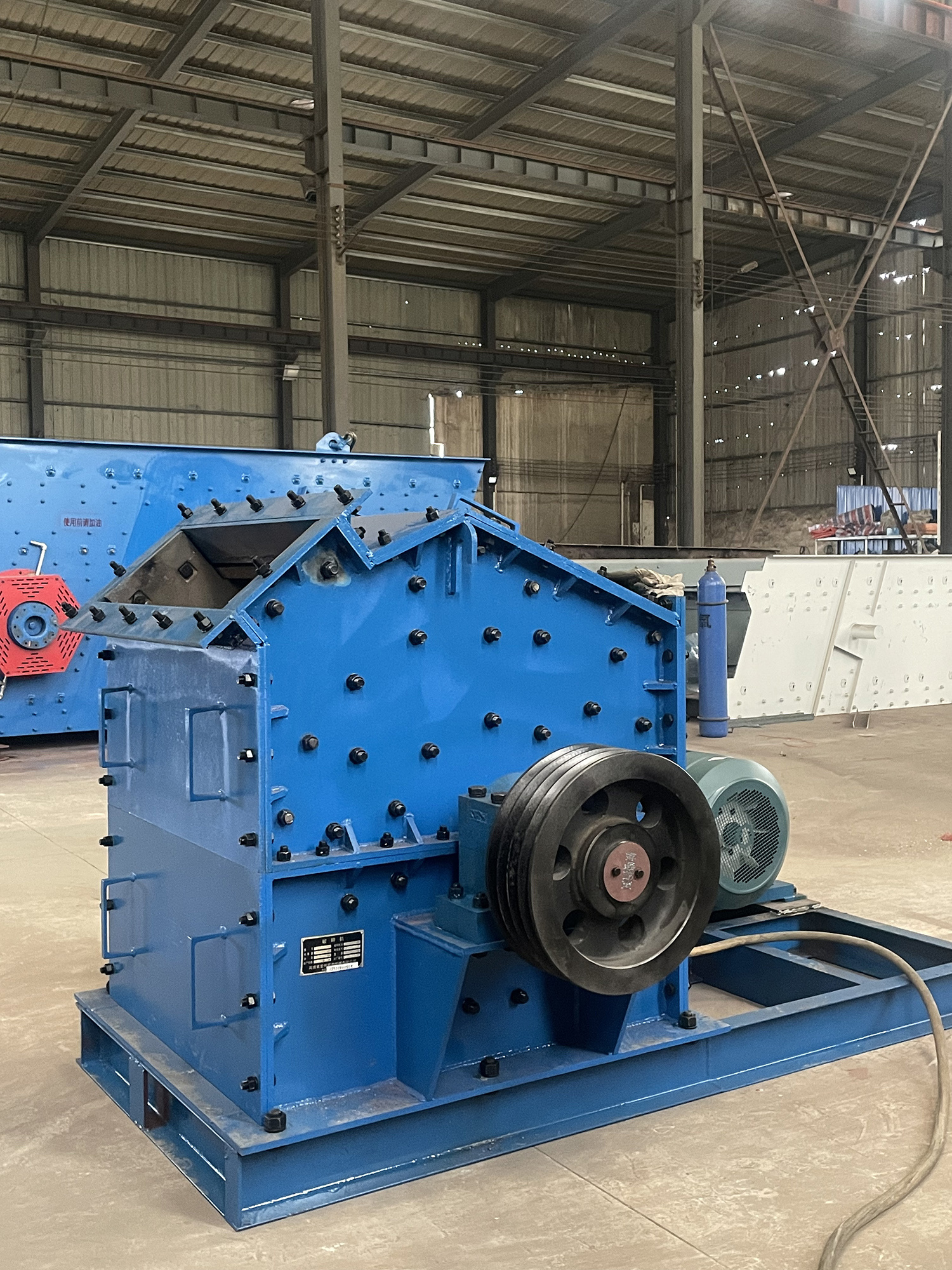Three-Axis Vibrating Screens: The Game Changer for Quarry Material Sorting
Oct 03,2025

Three-Axis Vibrating Screens: The Game Changer for Quarry Material Sorting
Table of Contents
1. Introduction to Three-Axis Vibrating Screens
2. Understanding the Mechanics of Three-Axis Vibrating Screens
3. Key Features of Three-Axis Vibrating Screens
4. Benefits of Using Three-Axis Vibrating Screens in Quarry Operations
5. Comparison with Traditional Screening Equipment
6. Applications of Three-Axis Vibrating Screens in the Quarry Industry
6.1 Gravel and Sand Sorting
6.2 Crushed Stone Sorting
6.3 Recycling Applications
7. Maintenance Tips for Optimal Performance
8. Frequently Asked Questions (FAQs)
9. Conclusion
1. Introduction to Three-Axis Vibrating Screens
In the dynamic world of quarrying, efficient material sorting is paramount. The **Three-Axis Vibrating Screen** emerges as a pivotal solution for quarry operations looking to enhance productivity and accuracy in material separation. These advanced screening devices operate on a unique three-dimensional motion, allowing for effective stratification of materials, which translates to improved output quality and operational efficiency.
2. Understanding the Mechanics of Three-Axis Vibrating Screens
Three-Axis Vibrating Screens utilize a distinctive motion mechanism that involves three axes of vibration. This multidimensional approach enables the screen to not only move vertically but also horizontally and in a circular motion. This complex movement ensures that materials are efficiently transported and sorted throughout the screening process.
The mechanics of these screens include:
- **Exciter Mechanism**: The vibratory motion is generated by an exciter unit, which typically consists of counterweights and motors designed to create the necessary vibration frequencies.
- **Screen Decks**: Different mesh sizes can be used on the screen decks to separate materials of varying sizes effectively.
- **Inclination Angle**: The angle at which the screen operates can be adjusted to optimize material flow and sorting efficiency.
3. Key Features of Three-Axis Vibrating Screens
When evaluating the effectiveness of Three-Axis Vibrating Screens, several key features stand out:
- **High Efficiency**: These screens provide superior sorting capabilities and can handle large volumes of material.
- **Durability**: Constructed from robust materials, they withstand harsh conditions typically found in quarry environments.
- **Customizable Decks**: Users can customize screen decks based on specific material types and sorting requirements.
- **Low Maintenance Needs**: Designed for ease of use, these screens require minimal maintenance, reducing downtime.
4. Benefits of Using Three-Axis Vibrating Screens in Quarry Operations
The adoption of Three-Axis Vibrating Screens in quarrying offers multiple benefits, making them an invaluable asset for operations across the industry.
- **Enhanced Sorting Accuracy**: The three-dimensional motion allows for a more thorough and precise sorting process, ensuring better quality output.
- **Increased Throughput**: With their ability to process a large volume of material rapidly, these screens significantly enhance productivity.
- **Versatility**: Suitable for various materials, including gravel, sand, and crushed stone, they adapt to different quarrying operations.
- **Cost-Effectiveness**: Reduced maintenance and increased efficiency lead to lower operational costs over time.
5. Comparison with Traditional Screening Equipment
When comparing Three-Axis Vibrating Screens to traditional screening equipment, the advantages become evident.
- **Motion Dynamics**: Unlike traditional screens, which primarily operate on linear motion, Three-Axis screens utilize a more complex vibration pattern, resulting in better material movement and sorting.
- **Higher Capacity**: The ability to handle larger volumes makes Three-Axis screens more efficient for modern quarry needs.
- **Lower Energy Consumption**: Improved design and efficiency lead to reduced energy usage compared to older models, offering cost savings in energy expenditure.
6. Applications of Three-Axis Vibrating Screens in the Quarry Industry
Three-Axis Vibrating Screens find diverse applications within the quarry sector, including:
6.1 Gravel and Sand Sorting
In the extraction of gravel and sand, precision is crucial. Three-Axis screens effectively separate fine particles from larger gravel, ensuring a high-quality product that meets industry standards.
6.2 Crushed Stone Sorting
For crushed stone, these screens are invaluable for sorting materials by size, enabling the production of uniformly sized aggregates essential for construction.
6.3 Recycling Applications
In recycling processes, Three-Axis Vibrating Screens facilitate the sorting of mixed materials, contributing to more efficient recycling efforts and promoting sustainability within the industry.
7. Maintenance Tips for Optimal Performance
To ensure that Three-Axis Vibrating Screens operate at peak performance, it is essential to follow a regular maintenance schedule:
- **Regular Inspections**: Frequently check for wear and tear on screen decks and the exciter mechanism.
- **Lubrication**: Keep all moving parts adequately lubricated to minimize friction and wear.
- **Cleaning**: Remove any buildup of material to prevent blockages and ensure efficient operation.
8. Frequently Asked Questions (FAQs)
What is a Three-Axis Vibrating Screen?
A Three-Axis Vibrating Screen is a screening device that utilizes three-dimensional motion to effectively sort materials based on size and weight.
How does a Three-Axis Vibrating Screen improve sorting efficiency?
By employing a unique vibration pattern, these screens facilitate better material flow and stratification, resulting in enhanced sorting accuracy.
What materials can be processed with Three-Axis Vibrating Screens?
These screens are versatile and can handle various materials, including gravel, sand, crushed stone, and recyclable materials.
How do Three-Axis Vibrating Screens compare to traditional screens?
Three-Axis screens provide higher efficiency, better sorting capabilities, and lower energy consumption compared to traditional linear screening equipment.
What maintenance is required for Three-Axis Vibrating Screens?
Regular inspections, lubrication of moving parts, and cleaning of screen decks are essential for optimal performance and longevity.
9. Conclusion
The advent of **Three-Axis Vibrating Screens** marks a significant evolution in quarry material sorting technology. Their unique motion dynamics and robust design make them indispensable for modern quarry operations. By enhancing sorting efficiency, increasing throughput, and reducing operational costs, these screens are indeed game-changers in the industry. As quarries continue to seek innovative solutions to meet rising demands, the role of Three-Axis Vibrating Screens will only become more prominent, solidifying their status as a critical tool for success in the competitive landscape of material processing.
Hot Tags:
PREVIOUS:
Contact Us
E-mail:byunfei2000@gmail.com
Wechat/WhatsApp:+86 17324886663
WhatsApp:+86 18738568071
Address:No. 12 Industrial Road, Zhaipo Town, Xinxiang, Henan Province







